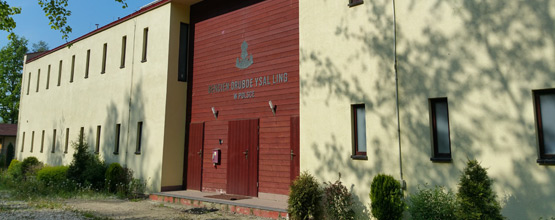
Since the foundation of the Kagyu school, many of its practitioners have placed greater emphasis on intensive meditative practice rather than on elaborated theoretical studies. The most favourable conditions for meditation can be found in a secluded place, where interactions with other people are limited. This is what meditational retreats are.
The benefits of such a meditative retreat are enormous. The Buddha taught in "The Moon Lamp Sutra" (Chandra-pradipa-sutra):
"Food, drink, robes, flowers, incense and garlands
are not what best serve and honour the Buddha, the finest being of all.
Whoever, longing for enlightenment and saddened with the evilness of conditioned life,
takes seven paces towards a place of retreat
with the intention of staying there in order to benefit beings
has far greater and better merit than those who make such offerings".
Also supporting the efforts of the retreatants is a very noble action accumulating a lot of merit. The great Tibetan yogi Milarepa wrote:
"The great yogi meditates in a rocky cave,
And benefactors bring him food.
These two interacting lead them together toward Enlightenment.
And the essence of this interaction lies in sharing merits".
Even a one-day retreat may be very helpful. Yet, particular benefits come from the traditional three-year retreat. In Tibetan Buddhism, practitioners have undertaken it since centuries, following programmes particular to the tradition of a given monastery. In the Kagyu school, the title 'lama' is given to those who completed at least one three-year meditative retreat.
With time, special establishments called drubkhangs (drub - practice, khang - house, building) were developed to ensure the best conditions for those wanting to complete the three-year cycle of meditations. Many of the monasteries in Buddhist countries have their own retreat centres. Since late the 1970s several drubkhangs have also been built, in some Western countries, both in the Kagyu, and Nyingma traditions.
The Benchen Drubde Osal Ling Drubkhang in Poland ("Benchen Clear Light Retreat Centre") was established under the auspices of the Rinpoches of Benchen Monastery: His Eminence Sangye Nyenpa Rinpoche and Venerable Tenga Rinpoche. Later, requested by both of the Rinpoches, also venerable Sangter Rinpoche began to offer empowerments, oral transmissions and teachings in drubkhang. Lama Rinchen was appointed by the Rinpoches to be the main teacher of the retreat, the so-called drubpon. In addition, lamas from Benchen monastery are invited to convey certain meditation instructions and teach the rituals. The drubkhang in Poland can accommodate sixteen practitioners: eight women and eight men.
On the 7th of September 2009 Kyabje Tenga Rinpoche led the ceremony of closing the gates of Drubkhang which inaugurated the first three-year retreat in the West in the tradition of Benchen Monastery. The first three-year retreat in the three-year retreat center "Benchen Drubde Osal Ling" in Grabnik finished on 5 September 2012. The ceremony was led by Venerable Sangter Rinpoche and the drubpons: Lama Rinchen, Lama Mingyur Sonam and Lama Yonten Palsang.
The second three-year retreat in Benchen Drubde Osal Ling in Grabnik begun on the 26th of August 2013. The solemn ceremony was led by His Eminence Sangye Nyenpa Rinpoche. The ritual of opening of the gates was carried out by Venerable Sangter Rinpoche, Umdze Lama Tsering and drubpön Lama Rinchen on the 8th of September 2016.





